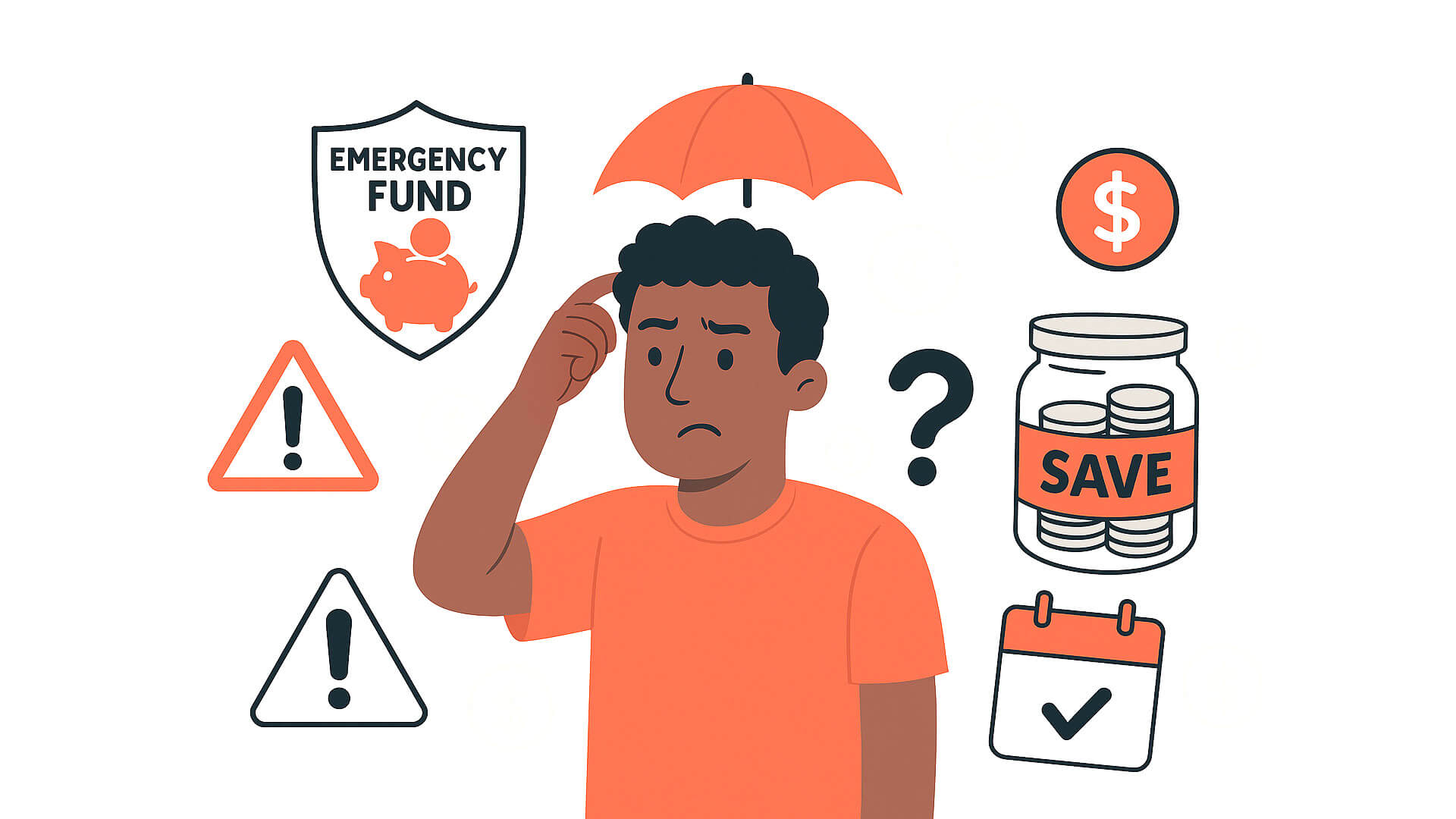Reducing Plastic Pollution: Strategies for a Cleaner Environment
Reducing plastic pollution is crucial for the health of our planet. Plastic waste is a major environmental issue that affects our oceans, wildlife, and human health. The good news is that there are strategies you can implement to reduce plastic pollution and help create a cleaner environment.
One of the most effective ways to reduce plastic pollution is to reduce your reliance on single-use plastics. This includes items such as plastic bags, water bottles, and straws. Instead, opt for reusable alternatives such as cloth bags, refillable water bottles, and metal or glass straws. By making this simple switch, you can significantly reduce the amount of plastic waste you produce and help protect our planet.
Another strategy for reducing plastic pollution is to properly dispose of plastic waste. This means recycling whenever possible and avoiding littering. When plastic waste is not disposed of properly, it can end up in our oceans and harm marine life. By taking responsibility for your plastic waste and properly disposing of it, you can help prevent this from happening.
The Impact of Plastic Pollution on the Environment
Plastic pollution is a major environmental issue that affects both land and water ecosystems. Plastics are non-biodegradable, meaning they do not break down naturally in the environment, and can persist for hundreds of years. As a result, plastic waste accumulates in landfills, oceans, rivers, and other natural habitats, causing harm to wildlife and ecosystems.
Impact on Wildlife
Plastic pollution poses a significant threat to wildlife, particularly marine animals. Sea turtles, birds, and fish can easily mistake plastic debris for food, leading to ingestion and entanglement. Ingesting plastic can cause digestive issues, suffocation, and even death. Entanglement in plastic debris can lead to injuries, drowning, and other fatal consequences.
Impact on Ecosystems
Plastic pollution also has a significant impact on ecosystems. Plastic waste can alter the physical and chemical properties of soil and water, leading to changes in nutrient cycles and water quality. Plastic debris can also act as a vector for invasive species, introducing non-native organisms into new habitats and disrupting natural ecosystems.
Impact on Humans
Plastic pollution can also have indirect impacts on human health and well-being. Plastic waste can leach toxic chemicals into soil and water, contaminating food and water supplies. In addition, plastic debris can lead to economic losses for industries such as fishing and tourism, which rely on healthy ecosystems.
Overall, plastic pollution is a complex and multifaceted issue that requires a concerted effort from individuals, communities, and governments to address. By reducing plastic waste and promoting sustainable practices, we can help protect the environment and preserve natural habitats for future generations.
Legislation and Policy for Plastic Reduction
Plastic pollution is a global problem that requires a coordinated effort from governments, businesses, and individuals to address. Legislation and policy play a crucial role in reducing plastic waste and promoting a cleaner environment. In this section, we will explore the various international agreements, national laws and regulations, and local ordinances that aim to reduce plastic pollution.
International Agreements
Several international agreements have been established to address plastic pollution. The United Nations Environment Programme (UNEP) launched the Clean Seas campaign in 2017, which aims to eliminate major sources of marine litter by 2022. The campaign has already mobilized over 60 countries to take action against plastic pollution. The Basel Convention, a global treaty that regulates the movement of hazardous waste, was amended in 2019 to include plastic waste. The amendment aims to reduce the amount of plastic waste that is dumped into the environment and promote its proper management.
National Laws and Regulations
Many countries have implemented laws and regulations to reduce plastic pollution. For example, in 2021, the European Union (EU) banned the sale of single-use plastics such as cutlery, plates, and straws. The ban also includes products made from oxo-degradable plastics, which break down into microplastics that are harmful to the environment. In the United States, several states have implemented bans or fees on single-use plastic bags, including California, New York, and Hawaii.
Local Ordinances
Local governments also play an important role in reducing plastic pollution. Many cities and towns have implemented ordinances to ban or limit the use of single-use plastics. For example, Seattle, Washington, banned the use of plastic straws and utensils in 2018. Other cities, such as San Francisco, California, and Boulder, Colorado, have implemented fees on single-use plastic bags to encourage consumers to bring their own reusable bags.
In conclusion, legislation and policy are crucial in reducing plastic pollution. International agreements, national laws and regulations, and local ordinances all play a role in promoting a cleaner environment. By working together, we can help reduce the amount of plastic waste that ends up in our oceans and on our land.
Innovative Recycling Technologies
Reducing plastic pollution is a crucial step towards a cleaner environment. One way to achieve this is by adopting innovative recycling technologies. These technologies offer efficient and sustainable ways of managing plastic waste. In this section, we will explore three types of innovative recycling technologies: Mechanical Recycling, Chemical Recycling, and Biological Processing.
Mechanical Recycling
Mechanical recycling is a process that involves the collection, sorting, and processing of plastic waste into new products. The process involves shredding and melting the plastic waste to create pellets that can be used to manufacture new products such as plastic bottles, containers, and bags. This process is widely used due to its cost-effectiveness and ease of implementation.
Mechanical recycling has its limitations, however. The quality of the recycled plastic is often lower than that of virgin plastic, and the process can only be repeated a limited number of times before the plastic becomes unusable. Nevertheless, mechanical recycling remains an important strategy for reducing plastic pollution.
Chemical Recycling
Chemical recycling is a process that involves breaking down plastic waste into its constituent molecules, which can then be used to create new products. This process involves the use of chemicals and heat to break down the plastic waste. The resulting molecules can be used to create a variety of products, including fuels, chemicals, and new plastic products.
Chemical recycling offers several advantages over mechanical recycling. It can process a wider range of plastic waste, including mixed plastics that cannot be recycled mechanically. Additionally, the quality of the recycled plastic is often higher than that of mechanically recycled plastic, making it suitable for use in high-quality products.
Biological Processing
Biological processing is a process that involves using microorganisms to break down plastic waste into its constituent molecules. This process is also known as biodegradation. The microorganisms consume the plastic waste and convert it into water, carbon dioxide, and other harmless byproducts.
Biological processing offers several advantages over mechanical and chemical recycling. It is a sustainable process that does not require the use of chemicals or heat. Additionally, it can process a wider range of plastic waste, including biodegradable plastics that cannot be recycled mechanically or chemically.
In conclusion, innovative recycling technologies offer efficient and sustainable ways of managing plastic waste. Mechanical recycling, chemical recycling, and biological processing each offer unique advantages and limitations. By adopting these technologies, we can reduce plastic pollution and create a cleaner environment for future generations.
Consumer Behavior and Education
Reducing plastic pollution requires a shift in consumer behavior and education. By raising public awareness and changing consumption patterns, individuals can play a crucial role in reducing plastic waste.
Public Awareness Campaigns
Public awareness campaigns can be an effective way to educate the public on the negative impacts of plastic pollution and encourage behavior change. These campaigns can take many forms, such as social media campaigns, public service announcements, and educational programs in schools and communities.
One successful example of a public awareness campaign is the “Skip the Straw” movement. This campaign encourages individuals to refuse single-use plastic straws in restaurants and other establishments. By raising awareness of the impact of plastic straws on the environment, this movement has led to a reduction in the use of plastic straws and an increase in the use of reusable alternatives.
Changing Consumption Patterns
Changing consumption patterns is another important strategy for reducing plastic pollution. Consumer education is essential to counter the expectation of receiving free bags and other single-use plastic items. Community-based social marketing can be an effective tool for educating consumers on the benefits of reducing plastic waste and encouraging behavior change.
Top-down legislative interventions can also be effective in reducing plastic pollution. For example, single-use plastic bag bans have been implemented in many cities and countries around the world, leading to a reduction in plastic waste. In addition, companies can play a role in reducing plastic pollution by offering more sustainable alternatives and reducing the amount of plastic packaging used.
By raising public awareness and changing consumption patterns, individuals can play a crucial role in reducing plastic waste and protecting the environment.
Corporate Responsibility and Sustainability
Reducing plastic pollution requires a collective effort from all stakeholders, including businesses. As a consumer, you can make a difference by choosing eco-friendly products and packaging. However, businesses also have a crucial role to play in reducing plastic waste. In this section, we will discuss some strategies that companies can adopt to promote corporate responsibility and sustainability.
Sustainable Packaging Solutions
One of the most effective ways for businesses to reduce plastic waste is to adopt sustainable packaging solutions. This can include using biodegradable materials, reducing the weight and volume of packaging, and designing packaging that can be easily recycled. For instance, companies can use compostable bags made from plant-based materials, or switch to reusable containers and bottles. By adopting sustainable packaging solutions, companies can reduce their environmental footprint and demonstrate their commitment to sustainability.
Corporate Waste Management Policies
Another way for companies to promote corporate responsibility and sustainability is by implementing waste management policies. This can include setting targets for reducing waste, implementing recycling programs, and reducing the use of single-use plastics. By adopting waste management policies, companies can reduce their environmental impact and promote a circular economy. A circular economy is an economic system that is regenerative and restorative by design, and aims to keep materials in use for as long as possible.
In conclusion, corporate responsibility and sustainability are essential for reducing plastic pollution. By adopting sustainable packaging solutions and waste management policies, companies can reduce their environmental footprint and promote a more sustainable future. As a consumer, you can support businesses that prioritize sustainability and encourage others to do the same.
Alternative Materials and Products
Reducing plastic pollution is not just about recycling, but also about finding alternative materials and products that can replace single-use plastics. Here are some alternatives that you can consider:
Biodegradable Plastics
Biodegradable plastics are made from natural materials that can break down into harmless substances when exposed to the environment. These materials include cornstarch, potato starch, and even algae. Biodegradable plastics can be used for a variety of products, such as bags, utensils, and food packaging.
However, it is important to note that not all biodegradable plastics are created equal. Some require specific conditions to break down, such as high temperatures or UV light. Others may break down into microplastics, which can still be harmful to the environment. Therefore, it is important to look for certifications such as the “OK compost” logo or the “ASTM D6400” standard when choosing biodegradable plastics.
Reusable and Compostable Items
Another alternative to single-use plastics is to use reusable and compostable items. Reusable items, such as cloth bags, water bottles, and utensils, can be used multiple times and reduce the need for single-use plastics. Compostable items, such as food containers and utensils made from materials like bamboo or sugarcane, can be composted after use and turned into nutrient-rich soil.
When choosing reusable and compostable items, look for products that are durable and made from sustainable materials. Avoid products that contain harmful chemicals or are not biodegradable. Additionally, make sure to properly dispose of compostable items in a compost bin or facility, rather than in the trash.
By choosing alternative materials and products, you can help reduce the amount of plastic waste that ends up in landfills and the environment.
Waste Management Infrastructure
To effectively reduce plastic pollution, proper waste management infrastructure is necessary. This includes collection and sorting systems, as well as waste treatment facilities.
Collection and Sorting Systems
Efficient collection and sorting systems are essential for effective plastic waste management. Municipalities should have a well-established system for collecting and sorting recyclable materials. This includes having designated bins for different types of waste, such as plastic, glass, and paper.
In addition, it is important to educate the public on proper waste disposal and recycling practices. This can be done through public awareness campaigns, as well as providing educational materials and resources.
Waste Treatment Facilities
Waste treatment facilities play a critical role in managing plastic waste. There are several treatment options available, including recycling, incineration, bioremediation, and landfills.
Recycling is one of the most effective ways to manage plastic waste. It involves converting plastic waste into new products, reducing the amount of waste that ends up in landfills or the environment. However, it is important to note that not all plastic can be recycled, and some types of plastic are more difficult to recycle than others.
Incineration involves burning plastic waste at high temperatures to convert it into ash and gas. While this method can be effective in reducing the volume of waste, it can also release harmful pollutants into the air.
Bioremediation involves using microorganisms to break down plastic waste. While this method is still in the experimental stage, it shows promise in reducing plastic waste in a sustainable way.
Landfills are the least desirable option for managing plastic waste. They can contribute to environmental pollution and greenhouse gas emissions. However, in some cases, they may be the only viable option for managing plastic waste.
Overall, a combination of collection and sorting systems, as well as waste treatment facilities, is necessary for effective plastic waste management. By implementing these strategies, we can work towards a cleaner, more sustainable environment.
Community-Led Initiatives
Reducing plastic pollution requires a collective effort, and community-led initiatives have proven to be effective in creating awareness and implementing sustainable solutions. Here are two community-led initiatives that have helped in reducing plastic pollution:
Beach Clean-Ups
Beach clean-ups are a great way to get involved in local initiatives to reduce plastic pollution. By volunteering in beach clean-ups, you can help in removing plastic waste from the environment and raising awareness about the issue. According to a report by the World Economic Forum, community-based clean-up projects along the Mekong River can help to reduce the amount of plastic waste that enters the ocean. By empowering communities in this area and educating them about the dangers of plastic pollution, we simultaneously clean the global environment while creating a better quality of life for those within these communities.
Zero-Waste Communities
Zero-waste communities are another community-led initiative that can help to reduce plastic pollution. These communities aim to reduce waste by implementing sustainable practices such as composting, recycling, and reducing single-use plastics. According to Forest Nation, community-led initiatives for the environment are actions groups of people take to improve their surrounding conditions. This engagement is essential to making actual differences in plastic waste reduction everywhere. The active involvement of civilian groups, non-governmental organizations (NGOs), and local communities is essential to reducing plastic pollution.
By implementing community-led initiatives such as beach clean-ups and zero-waste communities, we can reduce plastic pollution and create a cleaner environment.
Technological Innovations for Monitoring Pollution
As plastic waste continues to accumulate in the oceans, it is important to develop efficient and sustainable remediation solutions. One solution is the development and mobilization of technologies that can help monitor and track plastic waste. The following are some of the technological innovations that have been developed for this purpose.
Remote Sensing Technologies
Remote sensing technologies are becoming increasingly popular for monitoring and tracking plastic waste in the oceans. These technologies use satellite imagery to identify and track floating plastic waste. This data can then be used to develop effective remediation strategies. For example, the European Space Agency’s Sentinel-2 satellite is being used to monitor plastic waste in the oceans, and the data collected is being used to develop effective remediation strategies.
Data Analytics for Waste Tracking
Data analytics is another innovative technology that is being used to track plastic waste. This technology involves the use of sensors and other monitoring devices to collect data on the location and movement of plastic waste. The data collected is then analyzed using data analytics tools to identify patterns and trends in the movement of plastic waste. This information can then be used to develop effective remediation strategies. For example, the Ocean Cleanup project uses data analytics to track plastic waste in the oceans and develop effective remediation strategies.
In conclusion, technological innovations are playing a crucial role in monitoring and tracking plastic waste in the oceans. Remote sensing technologies and data analytics are just two of the many innovative technologies that are being developed for this purpose. These technologies are helping to develop effective remediation strategies that can help reduce plastic pollution in the oceans.
International Collaboration and Support
Reducing plastic pollution requires a global effort. International collaboration and support are essential in addressing this issue. Governments, organizations, and individuals around the world are working together to reduce plastic pollution and protect the environment.
Global Environmental Programs
Several global environmental programs are working towards reducing plastic pollution. The United Nations Environment Programme (UNEP) has launched the Clean Seas campaign, which aims to eliminate major sources of marine litter by 2022. The campaign focuses on reducing the use of single-use plastics, promoting recycling, and increasing awareness of the issue.
Another initiative is the End Plastic Pollution International Collaborative (EPPIC), which seeks to galvanize global action on plastic pollution by supporting projects around the world to make the full lifecycle of plastic more sustainable. The International Union for Conservation of Nature (IUCN) leads this program, which is generously supported by the United States Department of State.
Financial and Technical Aid for Developing Countries
Developing countries often lack the financial and technical resources to manage plastic waste effectively. International organizations provide support to these countries to help them reduce plastic pollution. For example, the World Bank Group and the Intergovernmental Negotiating Committee on Plastic Pollution Process are working to develop an International Legally Binding Instrument on plastic pollution, including in the marine environment. The instrument is based on a comprehensive approach that addresses the full life cycle of plastic.
Financial aid is also available to developing countries to help them reduce plastic pollution. The High Ambition Coalition to End Plastic Pollution, launched by Rwanda and Norway, aims to work towards an ambitious international treaty on plastic pollution. The coalition seeks to restrain plastic consumption and production to sustainable levels, enable a circular economy for plastics that protects the environment and human health, and reduce plastic leakage into the environment.
International collaboration and support are crucial in reducing plastic pollution. By working together, we can protect the environment and ensure a sustainable future for generations to come.
Future Perspectives and Research
As the world continues to grapple with the plastic pollution crisis, there is a need for emerging trends in plastic use and long-term environmental strategies to combat the problem. In this section, we will explore some of the latest developments in reducing plastic pollution and what the future holds.
Emerging Trends in Plastic Use
One of the most promising trends in plastic use is the increasing popularity of bioplastics. Bioplastics are made from renewable resources such as corn starch, sugarcane, and potato starch. They are biodegradable and compostable, making them a more sustainable alternative to traditional plastic. As research and development continue, bioplastics are expected to become more cost-effective and widely available.
Another emerging trend is the use of recycled plastic in manufacturing. Recycled plastic can be used to create new products, reducing the need for virgin plastic. This approach not only reduces plastic waste but also conserves resources and reduces greenhouse gas emissions. Companies are increasingly exploring ways to incorporate recycled plastic into their products, and governments are implementing policies to encourage its use.
Long-Term Environmental Strategies
Long-term environmental strategies are essential to reducing plastic pollution. One approach is to improve waste management systems, including recycling and waste-to-energy facilities. This will help reduce the amount of plastic waste that ends up in landfills and the environment.
Another strategy is to promote the circular economy, where products are designed to be reused, repaired, or recycled. This approach reduces the need for new materials and reduces waste. Governments and businesses are increasingly adopting circular economy principles, and research is ongoing to improve the design and implementation of circular systems.
In conclusion, reducing plastic pollution requires a multifaceted approach that includes emerging trends in plastic use and long-term environmental strategies. By adopting sustainable practices and investing in research and development, we can create a cleaner and healthier environment for future generations.
Frequently Asked Questions
What are effective methods for individuals to reduce plastic waste at home?
Reducing your plastic waste at home can be achieved by adopting simple yet effective methods. You can start by replacing single-use plastic items with reusable ones such as water bottles, shopping bags, and food containers. You can also reduce plastic waste by avoiding products with excessive packaging and buying in bulk. Recycling is also important, but remember to check with your local recycling center to ensure that you are disposing of plastic items properly.
How can students contribute to the efforts of reducing plastic pollution?
Students can make a significant impact in reducing plastic pollution by raising awareness and promoting eco-friendly practices in their schools and communities. They can organize campaigns to encourage their peers and teachers to reduce their plastic use, and to recycle properly. They can also participate in clean-up events and advocate for policies that promote sustainability.
What are some innovative approaches to minimize plastic waste generation?
Innovative solutions to minimize plastic waste generation include the development of biodegradable plastics, the use of plant-based materials, and the implementation of a circular economy. Companies are also exploring new methods of recycling and upcycling plastic waste to reduce its impact on the environment.
In what ways can communities participate in cleaning up plastic pollution?
Communities can participate in cleaning up plastic pollution by organizing local clean-up events and promoting responsible waste disposal. They can also advocate for policies that promote sustainability and support initiatives that encourage recycling and the reduction of plastic waste.
Can you list some strategies that have been successful in reducing plastic pollution in oceans?
Strategies that have been successful in reducing plastic pollution in oceans include the implementation of bans on single-use plastics, the development of biodegradable plastics, and the promotion of responsible waste disposal. Additionally, the use of innovative technologies such as ocean clean-up systems has helped to remove plastic waste from the oceans.
What solutions are available to address the broader issue of environmental pollution from plastics?
Solutions to address the broader issue of environmental pollution from plastics include the implementation of policies that promote sustainability, the development of alternative materials, and the adoption of a circular economy. It is also important to raise awareness and educate the public on the impact of plastic pollution on the environment, and to encourage responsible waste disposal and recycling practices.





